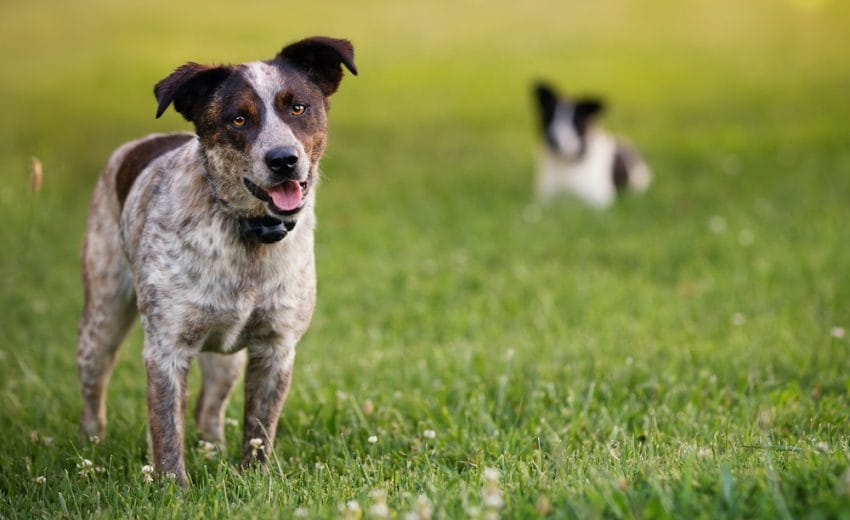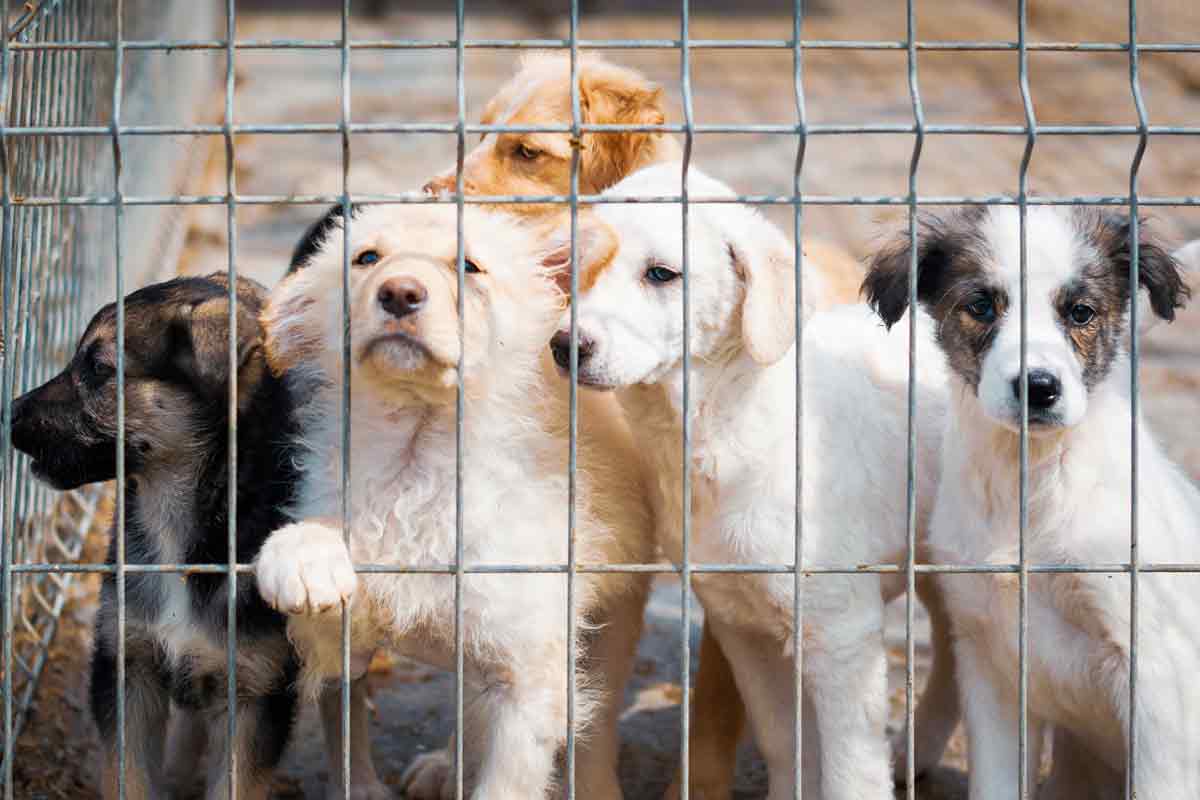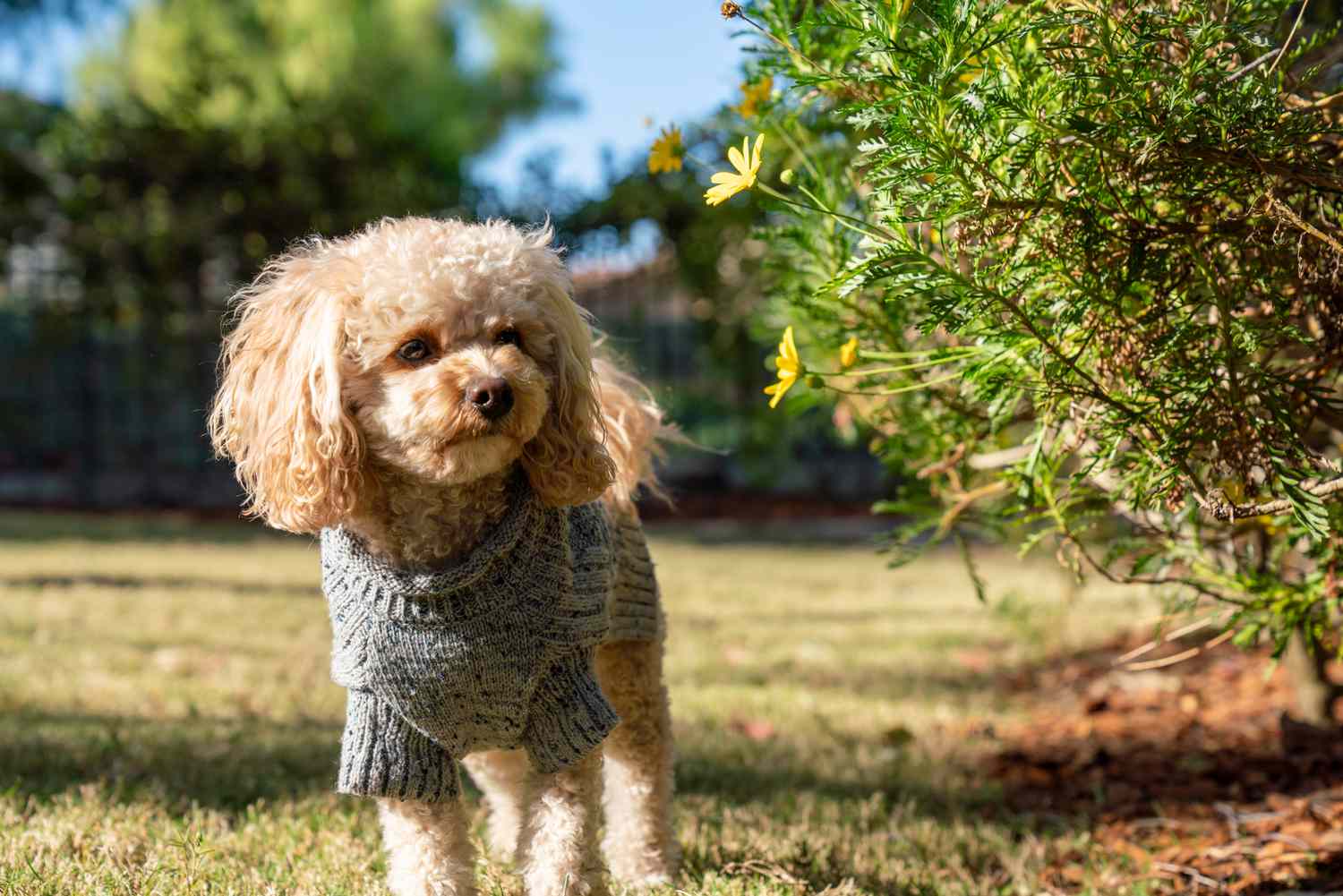When it comes to our furry family members, their safety and freedom are paramount. A dog fence serves as a guardian, a boundary that keeps them safe from the dangers of the outside world while giving them the liberty to romp and play in their own little haven. It’s more than just a physical barrier; it’s a peace-of-mind for pet owners and a symbol of care for our canine companions.
Within this boundary area, your dog can roam freely without receiving any static stimulation, ensuring they stay within the designated safe zone.
However, building a dog fence can often seem like a daunting and expensive task. That’s where this article comes in. Our aim is to demystify the process, showing you how to build a dog fence in a way that’s not only cost-effective but also straightforward and manageable. We understand that not everyone is a seasoned DIY expert, so we’re focusing on quick, affordable tips that anyone can follow. From choosing the right materials to the final touches, we’ll guide you through each step, ensuring your pet’s safety without straining your wallet. Let’s embark on this journey together, creating a safe space for your dog to enjoy the great outdoors.
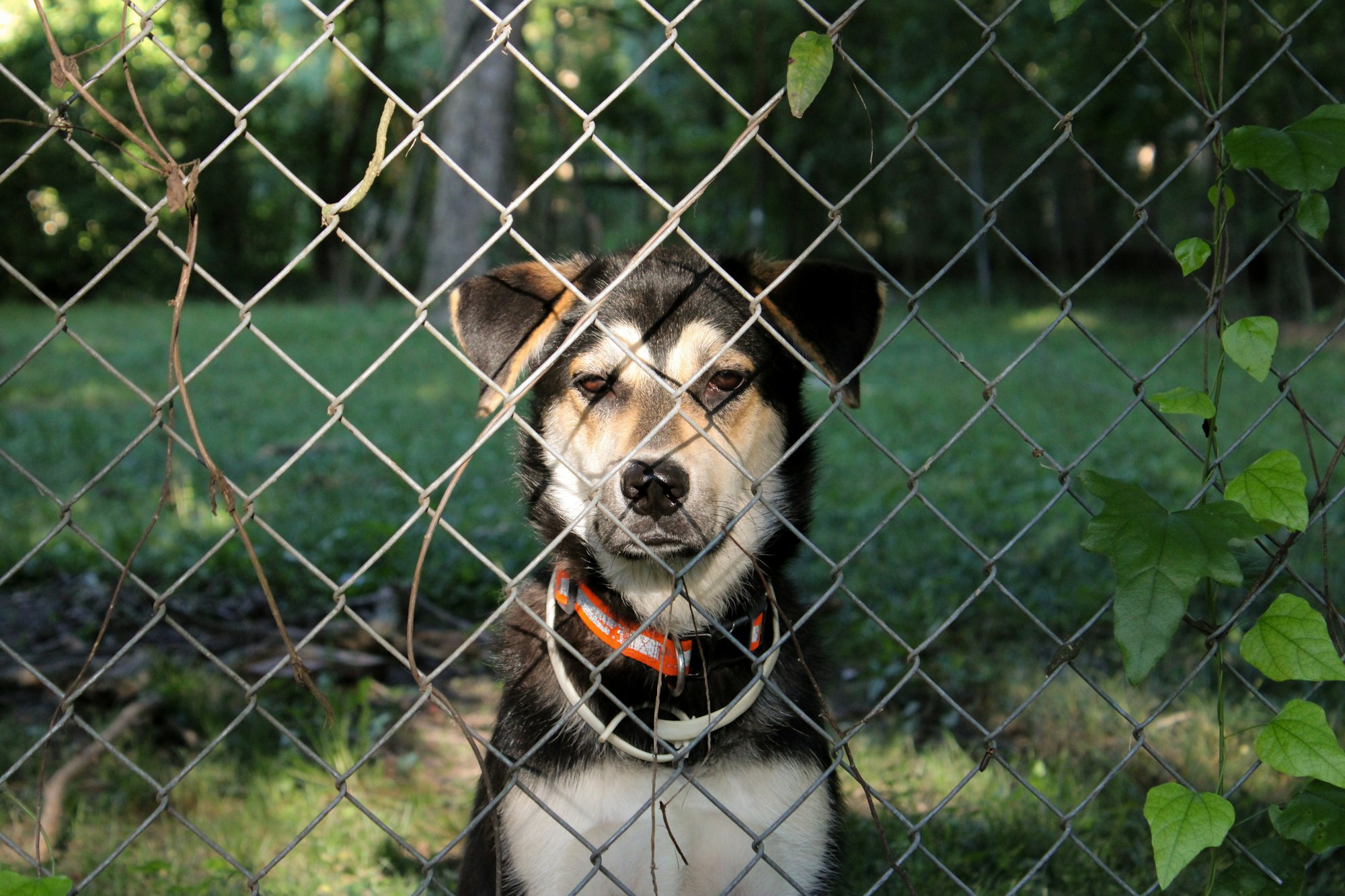
Assessing Your Needs
Building the right fence starts with understanding your dog. Different breeds have varying physical and behavioral characteristics, which play a crucial role in determining the ideal fence. For instance, agile breeds like Border Collies or Siberian Huskies, known for their jumping prowess, may require higher fences to prevent escape. On the other hand, smaller breeds like Dachshunds or Chihuahuas might be well-contained with a lower barrier but need a fence without gaps to prevent them from squeezing through.
A collar receiver with contact points can help in training dogs to stay within the boundary area. The collar receiver, worn by the dog with contact points touching its neck, allows the dog to roam freely within the boundary area. It gives a warning beep and vibration when the dog reaches the warning zone, and delivers a safe static stimulation if the dog enters the stimulation zone.
Strength is another factor. Breeds with a penchant for digging, such as Terriers, or those with a strong build like Rottweilers, need a sturdy fence that’s anchored well into the ground and made of durable materials to withstand potential wear and tear. Also, consider the temperament of your dog. High-energy dogs might need more secure fencing compared to a more laid-back breed.
Evaluating Your Yard
Next, let’s talk about your yard. The layout of your property greatly influences the type of fence you’ll build. Here are some tips for evaluation:
- Measuring Your Space: Accurately measure the area where you want to install the fence. This will help in estimating the amount of material needed and the cost.
- Laying Out the Boundary Wire: Establish the containment area by laying out the boundary wire. Bury the boundary wire to enclose the pet's boundary area and ensure it is separated by a certain distance to avoid signal interference, especially in a double loop setup.
- Observing the Terrain: Is your yard flat or sloped? The terrain can impact the type of fence you choose. For sloped yards, stepped or contoured fences might be necessary.
- Considering Aesthetics and Function: While safety is the priority, you don’t want to compromise on the aesthetic appeal of your yard. The fence should complement your home’s style while fulfilling its purpose.
- Identifying High-Risk Areas: Look for potential escape routes or areas where your dog might try to dig or jump. You might need to reinforce these parts of the fence.
- Checking Local Regulations: Before you start, it’s crucial to check with your local council for any fencing regulations or height restrictions. This ensures your fence is not only effective but also legal.
By thoroughly understanding your dog’s needs and evaluating your yard, you can make informed decisions on the type of fence to build. This preliminary assessment is key to ensuring the safety, happiness, and well-being of your four-legged friend, all while maintaining the integrity and beauty of your outdoor space.
Choosing the Right Materials
When it comes to building a dog fence on a budget, selecting the right materials is crucial. You want something that is cost-effective yet durable enough to ensure your dog’s safety. Let’s explore some budget-friendly options and weigh their pros and cons.
In addition to the materials discussed, it's worth considering traditional fencing and invisible fence as alternative options for dog containment. Traditional fencing, such as wood or chain-link, provides a physical barrier that is reliable and long-lasting. On the other hand, an invisible fence, like the Invisible Fence® brand, uses a combination of buried wires and a collar to keep your dog within a designated area without a visible structure. Each option has its own set of advantages and drawbacks, so it's important to choose the one that best fits your needs and budget.
Cost Effective and Budget-Friendly Options
- Chicken Wire: Chicken wire is an affordable and readily available material. It’s lightweight and relatively easy to install, making it a popular choice for temporary or low-budget fencing solutions.
- Wooden Pallets: Reusing wooden pallets can be an eco-friendly and economical option. Pallets are often available for free or at a low cost from local businesses.
- Recycled Materials: Think outside the box with recycled materials. Old iron fencing, repurposed wood, or even leftover construction materials can be transformed into a functional fence. Existing fences can also be modified to create effective dog fences, providing a cost-effective solution for pet containment.
Pros and Cons of Each Material
- Chicken Wire
- Pros: Chicken wire is inexpensive and easy to install. It works well for creating a flexible boundary and is ideal for small to medium-sized, less active dogs.
- Cons: It's not the most durable option and can be easily bent or broken, especially by larger, more active dogs. It also offers little in terms of privacy.
- Wooden Pallets
- Pros: Wooden pallets are sturdy and can provide a more solid barrier. They also offer room for creativity in design and can be painted to match your yard's aesthetic.
- Cons: Pallets require more work in terms of disassembly and installation. They can also be prone to weather damage if not properly treated or maintained.
- Recycled Materials
- Pros: Using recycled materials is environmentally friendly and can be a unique, cost-effective solution. This option allows for a lot of customization and can result in a strong, durable fence.
- Cons: Finding the right materials in sufficient quantities can be challenging. The quality of these materials can vary, and they may require additional treatment or reinforcement.
When choosing materials for your dog fence, consider your dog's size, behavior, and the overall environment of your yard. A fence for a small, calm dog can be very different from one needed for a large, energetic breed. Balance cost with functionality, and don't be afraid to get creative. By selecting the right materials, you can build a fence that's both affordable and effective, ensuring your dog's safety and your peace of mind.
Embarking on the project of building a dog fence requires not just the right materials, but also the appropriate tools and preparation. Let's look at what tools you'll need and the steps to get your area ready for construction.
List of Necessary Tools
To ensure a smooth fence-building process, gather these essential tools:
- Measuring Tape: For accurate measurements of your fencing area.
- Post Hole Digger or Shovel: For digging post holes.
- Level: To ensure your fence posts are straight and even.
- Hammer or Nail Gun: For securing parts of the fence.
- Wire Cutters (if using wire fencing): For cutting and shaping chicken wire or similar materials.
- Saw (if using wood): For cutting wooden pallets or planks to size.
- Staple Gun (for wire or mesh fencing): For attaching wire to wooden posts.
- Drill with Bits (if using wooden pallets or pre-fabricated materials): For assembling parts of the fence.
- Safety Equipment: Gloves, goggles, and sturdy footwear for personal protection.
- Pliers and Screwdrivers: For miscellaneous tasks and adjustments.
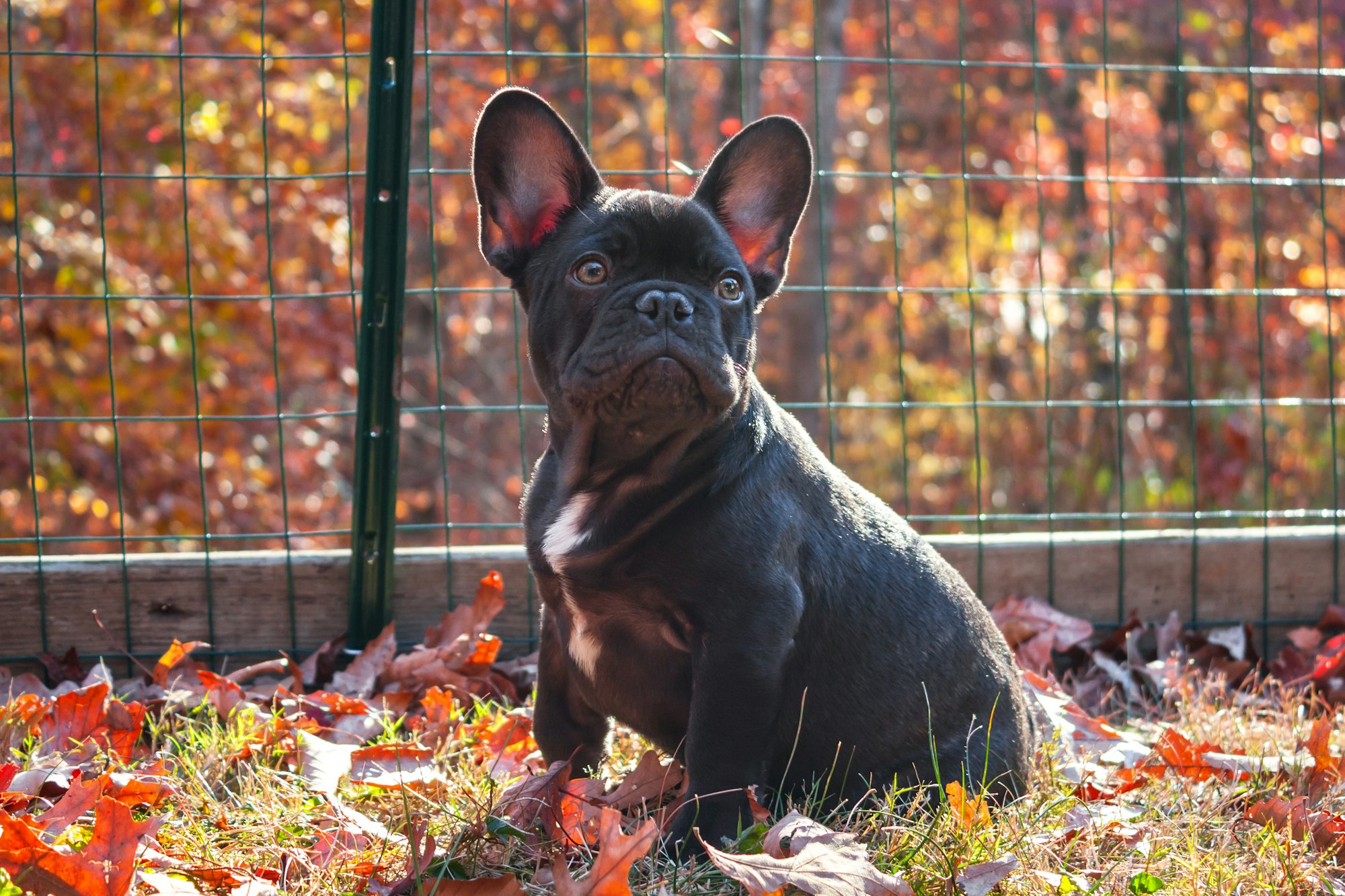
Preparation Steps
Now, let’s prepare your workspace:
- Clear the Area: Remove any debris, rocks, or plants that might obstruct the fence line. This ensures a clean and safe working area.
- Measure and Mark the Fence Line: Use your measuring tape to define the perimeter of your fence. Mark it clearly with stakes or spray paint. This will serve as a guide for where to dig post holes and align your materials.
- Check for Utilities: Before digging, ensure there are no underground utilities in your fence area. You can usually call a local service to check this for you.
- Plan for Gates: Decide where you want gates for entry and exit. Make sure they’re conveniently placed for easy access but secure enough to keep your dog contained.
- Consider separating the front yard from the back yard with gates to create distinct areas for containment or landscaping.
- Determine Post Spacing: Based on the fencing material you’ve chosen, determine how far apart your posts need to be. This is crucial for stability and aesthetics.
- Dig Post Holes: Using your post hole digger or shovel, dig holes for your fence posts. The depth will depend on the height of your fence but typically should be about a third of the post’s height.
- Align and Level: As you place your posts, use a level to ensure they’re straight. This is key for a sturdy and visually pleasing fence.
By gathering the right tools and properly preparing your area, you’re setting the stage for a smoother fence-building process. This preparation phase is crucial in laying down a strong foundation for a fence that is both functional and appealing, offering
Building Dog Fences: A Step-by-Step Guide
Building a dog fence can be a rewarding DIY project. With the right approach, you can create a safe and secure area for your pet. Let's break down the process into manageable steps.
Setting the Posts
- Digging the Holes: Use your post hole digger or shovel to dig holes for your fence posts. The depth should be about one-third the height of the post to ensure stability. For example, for a 6-foot tall post, dig a hole about 2 feet deep.
- Placing the Posts: Insert the posts into the holes. If you're using wooden posts, you might want to treat or paint them beforehand to prevent rot.
- Securing the Posts: There are a few ways to secure your posts. You can use concrete for a permanent and sturdy fence. Pour the concrete into the hole around the post and let it set according to the manufacturer's instructions. For a less permanent solution, pack the dirt tightly around the post.
- Checking for Alignment: Use a level to make sure each post is straight. This step is crucial for the overall stability and appearance of the fence.
Attaching the Fence Material
- Chicken Wire or Mesh: Unroll the chicken wire or mesh along the outside of the posts. Staple the material to the posts starting from one end, ensuring it's pulled tight to avoid sagging. Overlap the sections of wire or mesh slightly at the posts for added strength.
- Wooden Slats or Pallets: If using wooden slats or pallets, align them with the posts. Secure each slat to the posts using nails or screws. If your design calls for horizontal slats, ensure they are close enough to prevent your dog from squeezing through.
- Final Touches: Trim any excess material and check for any sharp edges or protrusions that could harm your dog.
Ensuring Stability and Safety
- Reinforcing Weak Points: Inspect the fence for potential weak points, especially at the gates and connections between materials. Reinforce these areas with additional hardware if necessary.
- Preventing Digging: If your dog likes to dig, consider burying a portion of the fence underground or installing a baseboard along the bottom of the fence.
- Regular Inspection: After the fence is built, regularly inspect it for any damage or wear, repairing it as needed. This is crucial for maintaining the safety and integrity of the fence.
- Safety First: Make sure there are no sharp edges or points where your dog could get hurt. All materials should be securely attached to prevent any loose pieces.
By following these steps, you can build a sturdy and safe fence for your dog. This not only ensures their safety but also provides them with a great space to play and explore. Remember, regular maintenance is key to keeping your fence in top condition for years to come.
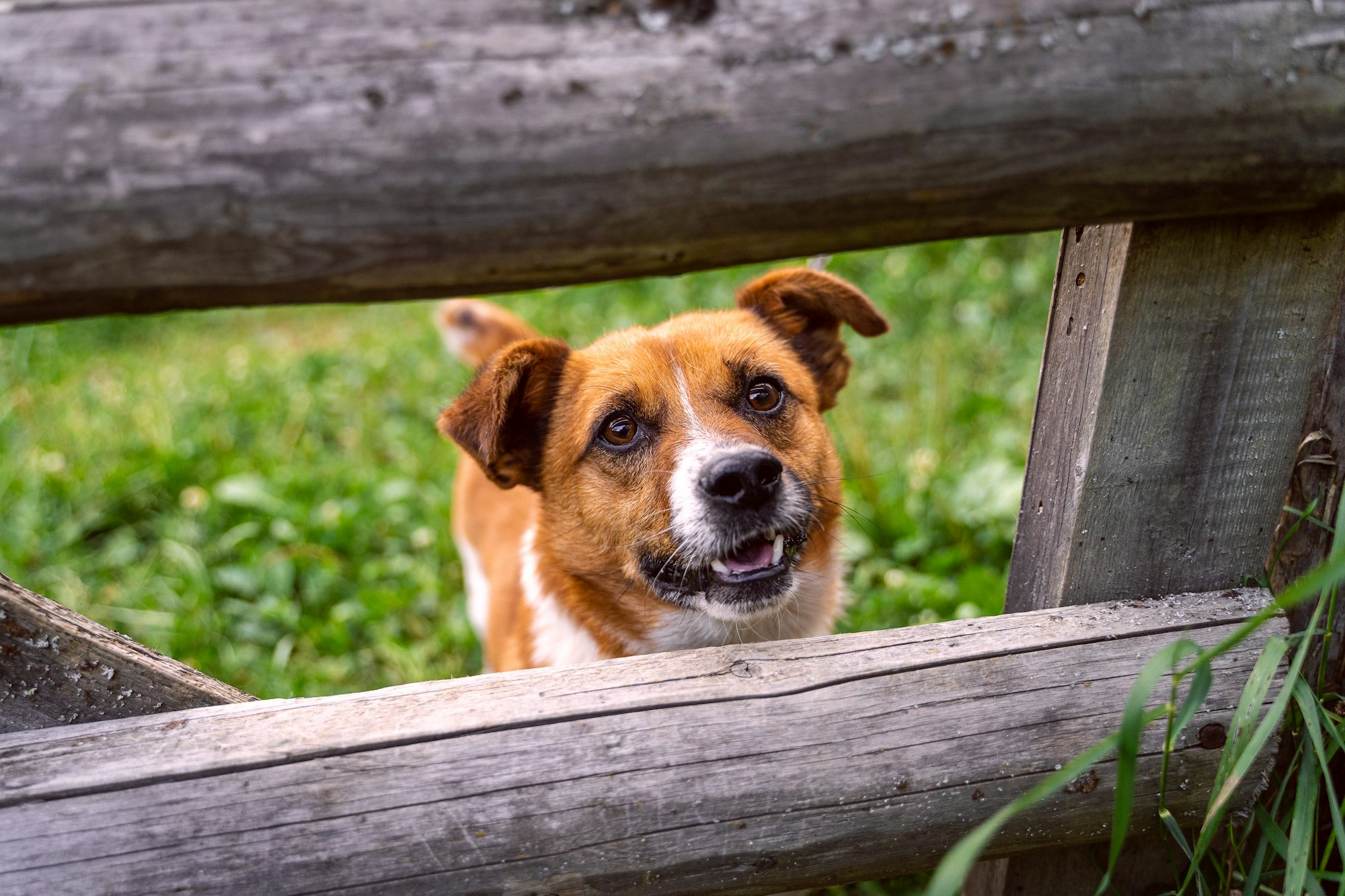
Introduction to Tryfi Dog Collars
Tryfi Dog Collars represent a breakthrough in pet care technology. These collars are not just ordinary accessories; they are designed with advanced features to keep your dog safe, healthy, and connected to you, no matter where they are.
Key Features of Tryfi Dog Collars
- GPS Tracking: One of the standout features of Tryfi Dog Collars is their GPS tracking capability. This feature allows you to monitor your dog's location in real-time through a mobile app. Whether your dog is in the backyard or on an adventure, you can always know their whereabouts.
- Activity Monitoring: These collars also come with activity tracking. You can monitor your dog's daily exercise, rest, and playtime, helping you ensure they're staying active and healthy.
- Durable Design: Built for all types of dogs and conditions, Tryfi Dog Collars are made with durability in mind. They are water-resistant and robust, able to withstand the playful and sometimes rough nature of dogs.
- Long Battery Life: The collar comes with a long-lasting battery, reducing the frequency of recharges and ensuring that your dog is always connected.
- Customizable Alerts: Set up safe zones and receive alerts if your dog leaves these areas. This feature is invaluable for preventing lost pets and ensuring their safety.
How Tryfi Dog Collars Benefit Your Dog
- Enhanced Safety: With real-time tracking and customizable alerts, you can always ensure your dog's safety. Whether they escape the yard or get lost during a walk, locating them becomes much easier.
- Health Management: By tracking your dog's activity, you can better manage their health, ensuring they get enough exercise and rest. This can be particularly beneficial for dogs with specific health needs.
- Peace of Mind: For pet owners, the peace of mind that comes with knowing where your dog is at all times is invaluable. Whether you're at work or on vacation, you can check in on your pet with just a few taps.
- Durability for All Adventures: Whether your dog loves to swim, run in the rain, or explore rough terrain, the Tryfi Dog Collar is designed to keep up with their lifestyle.
- Easy to Use: With a user-friendly app and simple setup process, using Tryfi Dog Collars is straightforward for all dog owners, regardless of their tech-savviness.
In conclusion, Tryfi Dog Collars offer a blend of safety, health monitoring, and convenience, making them a superb choice for modern pet owners. By choosing a Tryfi collar, you're not just picking a collar; you're choosing a smart way to care for your furry friend.
Conclusion:
In conclusion, building a dog fence cheaply is not just about affordability, but also about ensuring the safety and happiness of your furry companion. By understanding your dog's needs, choosing the right materials, and following a step-by-step guide, you can create a secure and durable fence within a budget. The process offers a rewarding opportunity to enhance your DIY skills while providing a safe space for your dog to play and explore.
Remember, a well-built fence not only keeps your dog contained but also gives you peace of mind. With these quick, affordable tips, you're all set to build a fence that meets both your and your dog's needs, striking the perfect balance between cost-effectiveness and reliability.
FAQs
- How high should a dog fence be to be effective?
- The height of your dog fence should depend on your dog's size and jumping ability. Generally, a fence of at least 4-6 feet is recommended for medium to large dogs, while 3-4 feet may suffice for smaller breeds.
- What is the most affordable material to use for a dog fence?
- Chicken wire and wooden pallets are among the most affordable materials. They are cost-effective and fairly easy to work with, making them great options for a budget-friendly dog fence.
- How can I prevent my dog from digging under the fence?
- To prevent digging, consider burying a portion of your fence into the ground, adding a baseboard along the bottom of the fence, or placing large rocks or pavers along the fence line.
- Is it necessary to treat wooden fences for outdoor use?
- Yes, treating wooden fences with a weather-resistant sealant is essential to protect them from the elements and prolong their lifespan.
- How often should I inspect and maintain my dog fence?
- Regular inspections are crucial. It's recommended to check your fence at least every few months for any signs of damage or wear, and after severe weather conditions.
- Can I build a dog fence if I'm not experienced in DIY projects?
- Absolutely! Building a dog fence can be a beginner-friendly project. By following step-by-step guides and preparing adequately, even those new to DIY can successfully build a functional and safe dog fence.
- Are there legal considerations to keep in mind when building a dog fence?
- Yes, it's important to check local zoning laws and homeowner association rules, as there may be restrictions on fence height, style, or placement.
- How do I choose the best location for a dog fence in my yard?
- Consider your dog's habits and needs, as well as the layout of your yard. Choose a location that offers enough space for your dog to move around and is away from potential hazards like busy roads or pools.
- Is it possible to build a dog fence that is also visually appealing?
- Certainly! With a bit of creativity, such as painting or adding decorative elements, your dog fence can be both functional and aesthetically pleasing.
- How can I make the fence safe for my dog?
- Ensure there are no sharp edges or gaps that your dog can get stuck in. The materials should be securely attached and the fence should be stable to prevent accidents.
Want to know more about dogs and fences?
